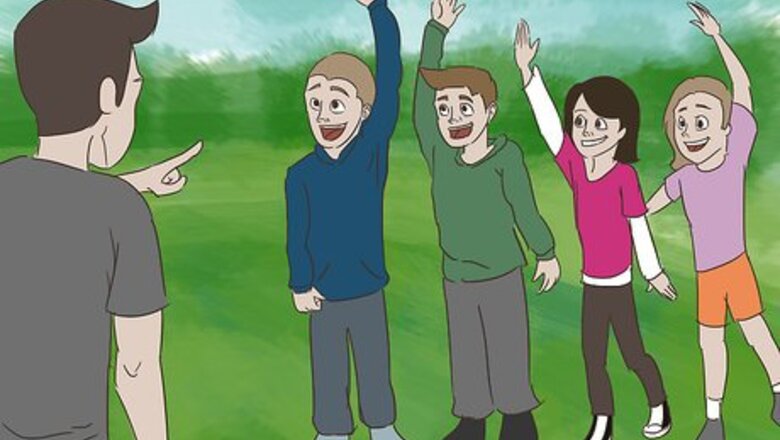
views
Setting Up
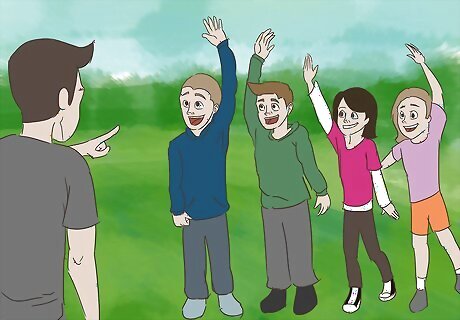
Choose the traffic cop. The traffic cop will be the one calling out the commands, directing traffic by yelling, “Red light” or “Green light.” The traffic cop is also the judge as to whether a child has moved on “red light.” Additionally, the traffic cop can be considered the finish line, the goal of the game being to make it to the cop. If playing with a class, the teacher can start as the traffic cop. If the teacher doesn’t wish to play, have a kid volunteer to be the traffic cop. Make sure the traffic cop has a loud voice so that everyone can hear the commands. This person can also be called a “stoplight” if you prefer. Whether you call them a traffic cop or stoplight, the function is the same. They will call out the commands and be the one in charge.
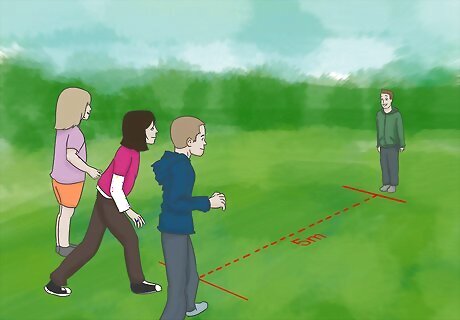
Distance the cop at least 5m away from the other players. There needs to be enough distance between the traffic cop and the kids to make the game fun and challenging. Have the traffic cop move at least 5m or 15ft away from everyone else. Wherever the traffic cop stands will be the finish line. If playing with older kids, make the game more advanced by adding more distance between the traffic cop and the other kids. You could even use the full length of a soccer or football field! Just make sure the traffic cop’s voice can carry that distance. It is best to start closer together and gradually add more distance as everyone learns the game.
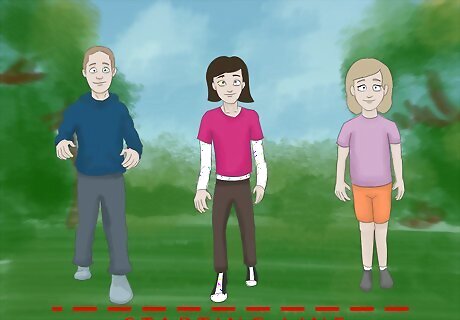
Form a straight line with the other players. Everyone besides the traffic cop should be on the starting line. They need to be lined up next to each other in a straight line so that no one has an advantage. Leave enough space in between each player so that they can run and move comfortably, perhaps a foot in between each player.
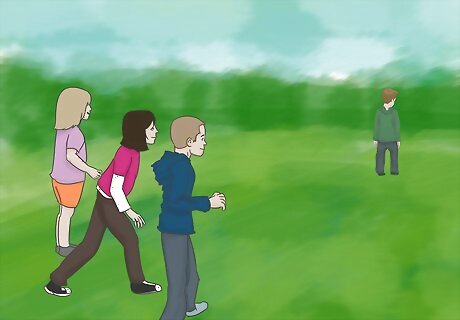
Have the traffic cop face away from the other players. The traffic cop should start by facing away from the players. They should not be able to see what anyone is doing to start. This is to ensure that they won’t try to catch a particular player off guard.
Playing the Game
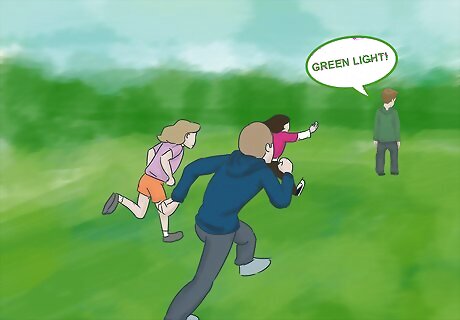
Have the traffic cop yell, “Green light.” This should be done while the cop is still facing away from the players. When the cop yells, “Green light,” the kids should immediately begin to run towards the traffic cop. The cop should wait a few seconds to allow the kids to move before yelling, “Red light." The kids should move fast, but not too fast or they won’t be able to stop quickly enough on “red light.” The goal of the game is to reach the traffic cop first, so it is a balance between moving quickly and being able to stop immediately.
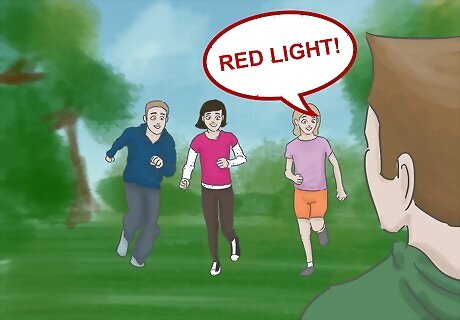
Have the traffic cop yell, “Red light” and turn around. The traffic cop should be looking for anyone who is still moving on “red light.” All players must immediately freeze when the cop yells, “Red light.”
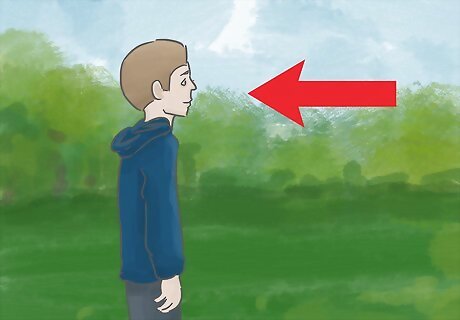
Send players that moved on “red light” back to the starting line. The penalty for moving on “red light” is to be sent back to the starting line, nullifying any progress made. That is why the game is a fine balance between moving quickly enough to make progress, but slowly enough to stop immediately. The traffic cop is the judge of whether someone was moving or not.
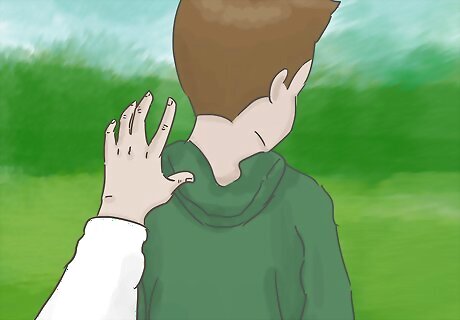
Repeat until someone reaches the traffic cop. Each time, the traffic cop needs to turn away from the players to yell, “Green light,” and then face the players to yell, “Red light.” This will happen several times during a game. Anyone moving on “Red light” is sent back to the starting line. The first person to reach the traffic cop is the winner, which concludes the game.

Let the winner be the next traffic cop. The reward for winning the game is to take the place of the traffic cop and be the one in charge. Then whoever wins the following game will take that cop’s place. The former traffic cop can move to the starting line to play the game with everyone else. In the event of a tie, you can play Rock, Paper, Scissors to settle it.
Trying Other Variations
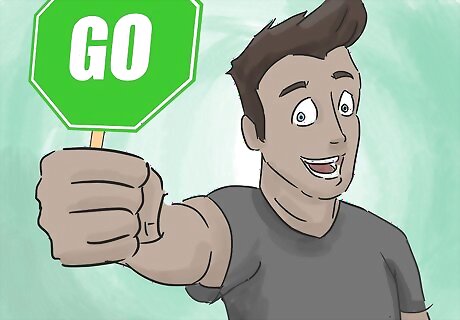
Play with the cop watching the players. To play this version, the cop simply never turns around, but stays facing the children throughout the game. This variation is useful for very young children that need to be watched at all times.
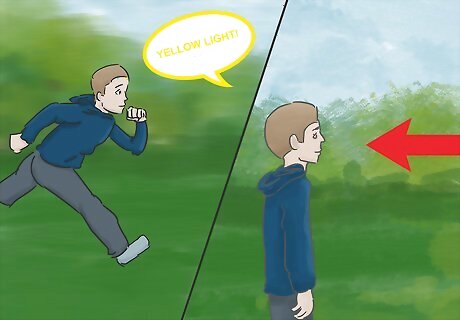
Add a “yellow light” command. This is a fun variation where kids may move on “yellow light,” but only in slow motion. The traffic cop can use all three commands and turn around on “yellow light” to ensure that everyone is moving slowly. On “yellow light,” anyone moving at “green light” speed or stopping completely will be sent back to the starting line.
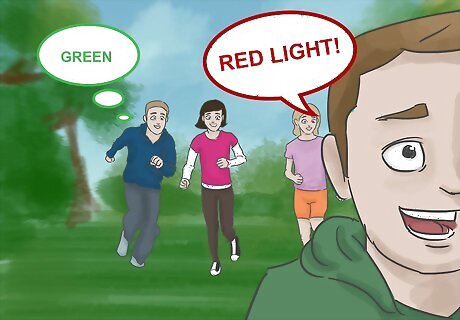
Allow for multiple “red lights” in a row. This is a lot of fun with older kids because you can trick them. Since they are used to “red light” interchanging with “green light,” they are likely to move on a repeated “red light,” expecting it to be a “green light.” This forces everyone to pay close attention and makes the game more challenging. The traffic cop simply faces away from the kids and acts as if they will say, “Green light,” but then quickly turns around and says, “Red light” instead, surely catching a few kids off guard. You can warn the kids that you will be adding multiple “red lights” so that they know to look out for it. You can do a few times where you alternate “red light” and “green light” as usual, and then suddenly do two or even three “red lights” in a row to add to the surprise.

Choose a different form of movement. Since kids normally run forward on “green light,” a fun variation is to change from running to a different activity, such as skipping, hopping, crawling, crab walking, or walking backwards. The traffic cop should announce the form of movement before calling, “Green light,” so that everyone knows how they will move. Any child not doing the appropriate movement will be sent back to the starting line.
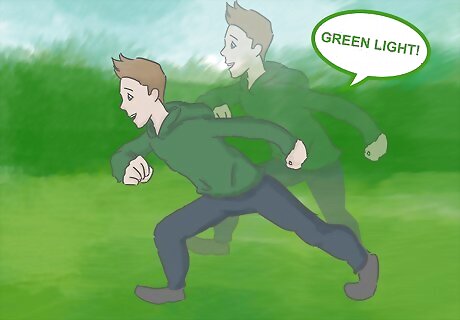
Make the traffic cop mobile. Let the traffic cop be the finish line and have them move around throughout the game. This will constantly change the scope of the game and will make it more challenging. A moving finish line can be a lot of fun and kids will constantly have to try to keep up. The traffic cop could take several steps away from the kids on each “green light” so that the kids have even more distance to cover.















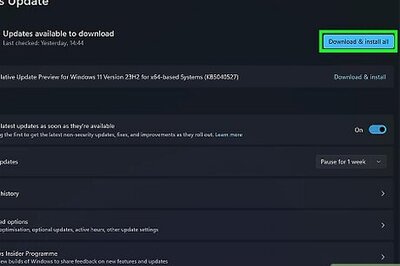
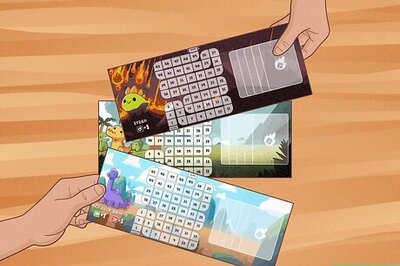


Comments
0 comment